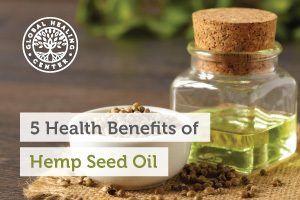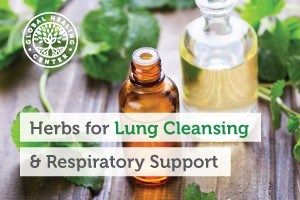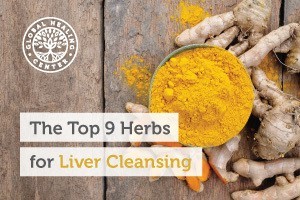5 Health Benefits of Hemp Seed Oil
(DrEddyClinic News) Hemp seed oil is a great source of high-quality nutrients and has a long history of use in Eastern culture as a multi-purpose natural remedy. Despite its widespread popularity, prejudice related to its association with cannabis has kept it from common use in the West. While the oil contains virtually no THC http://www.dreddyclinic.com/forum/viewtopic.php?f=15&t=33620, the psychoactive element in cannabis, hemp oil is still considered sketchy to some. Thankfully, education is prevailing and the market for hemp seed oil is growing in the United States, with an increasing number of people seeking it out for its reported health benefits.

1. Good for Heart Health
Hemp seed oil has a 3:1 ratio of Omega-6 to Omega-3 fatty acids, a balance that has been shown to support heart health http://www.dreddyclinic.com/forum/viewtopic.php?f=106&t=32685 and promote proper cardiovascular function. [1] These nutrients play a role in many biological processes and may help prevent a number of degenerative diseases. [2]


2. Supports Healthy Skin, Hair, and Nails
Hemp seed oil is often used as a moisturizer for the skin, and for good reason. Studies have indicated that hemp seed oil can dramatically decrease skin dryness to alleviate itching and irritation. [3] Moreover, the antioxidant http://www.dreddyclinic.com/forum/viewtopic.php?f=21&t=32801 and anti-inflammatory properties may protect against the aging process while soothing the skin. [4]
3. Excellent Nutrition for Your Brain
Hemp seed oil contains essential fatty acids, including docosahexaenoic acid (DHA), that are required for brain development. DHA http://dreddyclinic.com/forum/viewtopic.php?f=21&t=33213 is crucial to the health of the brain as well as the retina of the eye, particularly in the first year of life. [5] Mothers who supplement with hempseed oil during pregnancy may provide brain- and eye-protective benefits for the developing baby.
4. It’s a Mercury-Free Fatty Acid Supplement
Taking a fish oil supplement can be a helpful way to increase omega-3 fatty acids in your diet, a nutrient that is essential for brain development, immune system health, and mood regulation. [6] [7] [8] Expectant mothers certainly want to include these nutrients in their diet; however, fish contains a great deal of mercury http://www.dreddyclinic.com/forum/viewtopic.php?f=11&t=32335 which can hinder neurological and developmental mechanisms in the unborn baby. Fortunately, hemp seed oil works as a terrific alternative to traditional omega-3 fatty acid supplements and doesn’t carry the same risk of mercury ingestion. [9]
5. Supports the Immune System
The essential fatty acids in hemp seed oil have been shown to promote healthy flora in the intestines and support immune system response http://dreddyclinic.com/forum/viewtopic.php?f=9&t=32611 and function. [10] This can be very helpful during the cold and flu season when viruses are running rampant at school, work, and in everyday social interactions.
Is hemp seed oil part of your life? If so, what do you use it for? We’d love for you to leave a comment and share your experience!
by Dr. Edward Group DC, NP, DACBN, DCBCN, DABFM
References:
1. Gavel NT, Edel AL, Bassett CM, Weber AM, Merchant M, Rodriguez-Leyva D, Pierce GN. The effect of dietary hempseed on atherogenesis and contractile function in aortae from hypercholesterolemic rabbits http://www.ncbi.nlm.nih.gov/pubmed/21893466. Acta Physiologica Hungarica. 2011 September;98(3):273-83. doi: 10.1556/APhysiol.98.2011.3.4.
2. A. P. Simopoulos. Evoluntionary aspects of diet, the omega-6/omega-3 ratio and genetic variation: nutritional implications for chronic diseases http://www.direct-ms.org/pdf/NutritionFats/Simopoulos%20Omega%20ratio%2006.pdf. Biomedicine & Pharmacotherapy. 28 July 2006. 60 (2006) 502-507.
3. Callaway J, Schwab U, Harvima I, Halonen P, Mykkänen O, Hyvonen P, Jarvinen T. Efficacy of dietary hempseed oil in patients with atopic dermatitis http://www.ncbi.nlm.nih.gov/pubmed/16019622. The Journal of Dermatological Treatment. 2005 April;16(2):87-94.
4. Sapino S, Carlotti Me, Peira E, Gallarate M. Hemp-seed and olive oils: their stability against oxidation and use in O/W emulsions http://www.ncbi.nlm.nih.gov/pubmed/16130045. Journal of Cosmetic Science. 2005 July-August;56(4):227-51.
5. Connor WE, Neuringer M. The effects of n-3 fatty acid deficiency and repletion upon the fatty acid composition and function of the brain and retina http://europepmc.org/abstract/MED/3241811. Progress in Clinical and Biological Research. 1988, 282:275-294.
6. Bourre JM. Roles of unsaturated fatty acids (especially omega-3 fatty acids) in the brain at various ages and during ageing http://www.ncbi.nlm.nih.gov/pubmed/15129302. The Journal of Nutrition Health and Aging. 2004;8(3):163-74.
7. Ergas D, Eilat E, Mendlovic S, Sthoeger ZM. n-3 fatty acids and the immune system in autoimmunity http://www.ncbi.nlm.nih.gov/pubmed/11802309. The Israel Medical Association Journal. 2002 January;4(1):34-8.
8. Peet M, Stokes C. Omega-3 fatty acids in the treatment of psychiatric disorders http://www.ncbi.nlm.nih.gov/pubmed/15907142. Drugs. 2005;65(8):1051-9.
9. Emily Oken, Robert O. Wright, […], and Matthew W. Gillman. Maternal Fish Consumption, Hair Mercury, and Infant Cognition in a U.S. Cohort http://www.ncbi.nlm.nih.gov/pmc/articles/PMC1281283/. Environmental Health Perspectives. October 2005; 113(10): 1376-1380.
10. Fritsche K. Fatty acids as modulators of the immune response http://www.ncbi.nlm.nih.gov/pubmed/16848700. Annual Review of Nutrition. 2006;26:45-73.
The 9 Best Herbs for Lung Cleansing and Respiratory Support
(DrEddyClinic News) Your respiratory system is constantly working. All day, every day, it is the vehicle for oxygen to enter your body. Unfortunately, it can also be an entry point for pollutants, irritants, dust, mold, fungus, harmful organisms, and other toxins. Unless you’re living in a bubble, the constant assault from impurities can take its toll. Fortunately, whether you’re experiencing the negative effects of inhaling toxins, or simply want to ensure your lungs are always at peak performance, nature has provided a number of herbs and botanicals that provide deep nutrition for the respiratory system.

How are Herbs Beneficial for the Respiratory System?
Herbs that support lung health typically do so by offering one or more of the following benefits:
- They may be an expectorant — which helps break up and expel chest congestion.
- Soothe irritated nasal passages and airways.
- Relax the muscles near the upper respiratory system to quell a cough.
- Calm the release of histamines.
- Fight the harmful organisms that can produce upper respiratory problems.
- They may be a source of antioxidants and reduce oxidative damage and redness.
- Let’s take a look at the nine best herbs for respiratory health!
1. Eucalyptus
Native to Australia, eucalyptus isn’t just for Koala bears! Aborigines, Germans, and Americans have all used the refreshing aroma of eucalyptus to promote respiratory health and soothe throat irritation. Eucalyptus http://www.dreddyclinic.com/forum/viewtopic.php?f=11&t=33696 is a common ingredient in cough lozenges and syrups and its effectiveness is due to a compound called cineole. Cineole has numerous benefits — it’s an expectorant, can ease a cough, fights congestion, and soothes irritated sinus passages. As an added bonus, because eucalyptus contains antioxidants, it supports the immune system during a cold or other illness.
2. Lungwort
Lungwort http://www.dreddyclinic.com/forum/viewtopic.php?f=11&t=33692 is a flowering rhizomatous that actually resembles lung tissue in appearance. However, this natural remedy doesn’t just look the part. As early as the 1600’s, lungwort has been used to promote lung and respiratory health and clear congestion. Lungwort also contains compounds that are powerfully effective against harmful organisms that affect respiratory health.
3. Oregano
Although oregano contains the vitamins and nutrients required by the immune system, its primary benefits are owed to its carvacrol and rosmarinic acid content. Both compounds are natural decongestants and histamine reducers that have direct, positive benefits on the respiratory tract http://www.dreddyclinic.com/forum/viewtopic.php?f=11&t=33701 and nasal passage airflow. Oregano has so many health benefits http://www.dreddyclinic.com/forum/viewtopic.php?f=19&t=33706 that a bottle of organic oregano oil should be in everyone’s medicine cabinet. I recommend you check out this article to learn all the uses for organic oregano oil http://www.dreddyclinic.com/forum/viewtopic.php?f=19&t=33706.
4. Plantain Leaf
The plantain http://www.dreddyclinic.com/forum/viewtopic.php?f=19&t=33693 leaf has been used for hundreds of years to ease cough and soothe irritated mucous membranes. Clinical trials have found it favorable against cough, cold, and lung irritation. Plantain leaf has an added bonus in that it may help relieve a dry cough by spawning mucus production in the lungs. Good stuff!
5. Elecampane
The Greeks, Romans, Chinese, and even Indian Ayurvedic medicine have cited elecampane http://www.dreddyclinic.com/forum/viewtopic.php?f=11&t=33688 for respiratory support and, since the 1800’s, lozenges and cough drops have been produced from elecampane root. The reason? Elecampane has a relaxing effect on smooth tracheal muscles. There are two active compounds in elecampane root that provide the beneficial effect — inulin, which soothes bronchial passage, and alantolactone, an expectorant with antitussive action.


6. Lobelia
Did you know that horses given lobelia are able to breath more deeply? Its benefits are not limited to equestrians. Lobelia, by some accounts, is thought to be one of the most valuable herbal remedies in existence. Lobelia http://www.dreddyclinic.com/forum/viewtopic.php?f=11&t=33694 contains an alkaloid known as lobeline, which thins mucus, breaks up congestion. Additionally, lobelia stimulates the adrenal glands to release epinephrine, in effect, this relaxes the airways and allows for easier breathing. Also, because lobelia helps to relax smooth muscles, it is included in many cough and cold remedies. Lobelia should be part of everyone’s respiratory support protocol!
7. Chaparral
Chaparral, a plant native to the southwest, has been appreciated by the Native Americans for lung detoxification and respiratory support http://dreddyclinic.com/forum/viewtopic.php?f=11&t=33715. Chaparral contains powerful antioxidants that resist irritation and NDGA which is known to fight histamine response. Chaparral is also an herb that fights harmful organisms. The benefits of chaparral are most available in a tincture extraction but chaparral tea may support respiratory problems by encouraging an expectorant action to clear airways of mucus.
8. Peppermint
Peppermint http://www.dreddyclinic.com/forum/viewtopic.php?f=11&t=33691, and peppermint oil http://www.dreddyclinic.com/forum/viewtopic.php?f=11&t=33702, contains menthol — a soothing ingredient known to relax the smooth muscles of the respiratory tract and promote free breathing. Paired with the antihistamine effect of peppermint, menthol is a fantastic decongestant. Many people use therapeutic chest balms and other inhalants that contain menthol to help break up congestion. Additionally, peppermint is an antioxidant and fights harmful organisms.
9. Osha Root
Osha http://www.dreddyclinic.com/forum/viewtopic.php?f=11&t=33690 is an herb native to the Rocky Mountain area and has historically been used by the Native Americans for respiratory support. The roots of the plant contain camphor and other compounds which make it one of the best lung-support herbs in America. One of the main benefits of osha root is that it helps increase circulation to the lungs, which makes it easier to take deep breaths. Also… when seasonal sensitivities flare up your sinuses, osha root, which is not an actual antihistamine, does produce a similar effect and may be help calm respiratory irritation!
Supplementing with Lung Support Herbs
All of the above herbs are available, in various forms, as nutritional supplements and in tea blends. Additionally, many people grow herbs in their garden and simply consume them as food. That’s not a bad idea! If you grow them yourself, you can rest easy knowing the source is a good one. If not, it can be difficult to know if nutritional supplements use herbs that are organic, contain pesticides, ethically harvested, given clean water, etc. These are not factors for which you can or simply should assume the best — ask questions and verify that you’re getting the best product possible. To make it easy, I recommend Allertrex http://bit.ly/dreddyclinic-allertrex, which contains all the herbs listed above except for oregano and osha root – organic and wildcrafted – as well as lovage http://dreddyclinic.com/forum/viewtopic.php?f=13&t=33970, bee balm, orange peel http://dreddyclinic.com/forum/viewtopic.php?f=11&t=34141, menthol crystals http://dreddyclinic.com/forum/viewtopic.php?f=11&t=34206, and nascent iodine http://www.dreddyclinic.com/forum/viewtopic.php?f=21&t=33657.
Have you used any of these natural remedies to support your respiratory health? What benefits did you notice? Please leave a comment below and share your experience with us!
by Dr. Edward Group DC, NP, DACBN, DCBCN, DABFM
The Top 9 Herbs for Liver Cleansing
(DrEddyClinic News) Imagine a fish tank with a motorized water filter. If the filter is clogged with toxins from the tank, the entire tank becomes filled with the same contaminants. In our system, the filter is the liver, the tank is the body, and the fish that has to live in it is you.

Thankfully, a number of herbs for liver cleansing do exist. But first, let’s examine the role of the liver in detoxification a bit further.
The liver is the primary organ responsible for expelling and breaking down toxins entering the body. In particular, it produces bile, a detoxifying agent metabolically indispensable in breaking down fats from food. Even many traditional medical doctors are fully aware of just how important the health of your liver plays in the outcome of your overall health.
Dr. Karl Maret, M.D. :
“The proper functioning of the eyes, the heart, the brain, the gonads, the joints, and the kidneys, are all dependent on good liver activity… If the liver is impaired from constructing even one of the thousands of enzyme systems the body requires, there is an impairment in overall body function and a resultant greater metabolic stress on the individual.”
There are many herbs that can help with liver cleansing. Here are the top 9 herbs I use and recommend:


Borotutu Bark
Borotutu bark http://bit.ly/what-is-borututu-bark is by far one of the most powerful substances when it comes to liver cleansing and digestive system support. It has even shown promise in combating biliary colic, and jaundice. It’s also important to note that this herb contains powerful antioxidants which are known to help protect your liver cells from serious damage.
Milk Thistle Seed
Milk thistle http://bit.ly/benefits-of-milk-thistle-seed has been used for over two thousand years due to its remarkable effects on the liver and gallbladder. Galen and Pliny, the ancient philosophers recognized and used the power of milk thistle for liver cleansing and support. Milk thistle helps with the detoxification of poisons such as alcohol, regeneration of damaged liver tissue, stimulation of bile production, and improved digestion.
Chanca Piedra
The indigenous people of the amazon have used chanca piedra http://bit.ly/benefits-of-chanca-piedra for centuries to promote the body’s natural elimination of liver, gallbladder and kidney stones. It also stimulates the liver to purge itself of harmful toxins and foreign particles. Chanca piedra soothes the liver, increases bile production, and reduces the formation of calcified stones in the body.
Greater Celandine
The ancient greeks and romans considered celandine http://bit.ly/benefits-of-organic-greater-celandine to be one of the most powerful liver cleansing herbs. Maurice Mességué the famous french herbalist used greater celandine for all liver problems. Celandine stimulates enzyme production from the pancreas, helps the liver eliminate foreign particles, stimulates the production of bile, helps relieve gallbladder spasms and improves a sluggish liver.
Chicory Root
Known for its vibrant blue flowers, chicory http://bit.ly/benefits-of-chicory-root is also a medicinal herb celebrated for its ability to help cleanse the liver. Ancient Roman, Persian, Arabian, and Indian physicians used chicory leaves and root to aid against a slew of liver ailments including jaundice, gallbladder and liver stones, urinary stones, constipation, indigestion, depression, and headaches.
Dandelion Root
This humble weed—often hacked to bits by lawn care workers—is a liver cleanser that has been celebrated throughout the ages. Dandelion root http://bit.ly/benefits-of-dandelion-root stimulates bile flow from the liver, and is often used by herbalists to help fight fatty liver, cirrhosis, estrogen dominance, and even acne.
Organic Turmeric
This yellow root—a cousin of ginger—is a powerful liver protector and even liver cell regenerator. It not only helps stimulate enzymes responsible for flushing out toxins (including known carcinogens) from the body, but UCLA research found that turmeric http://bit.ly/turmeric-curcuma is capable of combating the effects of carcinogens.


Peppermint
Peppermint http://bit.ly/benefits-of-peppermint isn’t just for fresh breath. This herb stimulates bile flow and relaxes bile ducts, helping to break down fats. It also helps reduce bad cholesterol, which makes the liver’s job of filtering toxins easier. Peppermint also inhibits blockages in the kidney and gallbladder and calms the stomach for optimal digestion.
Organic Yellow Dock Root
This herb is known as a blood purifier and commonly used to cleanse toxins from the body. Yellow dock http://bit.ly/benefits-of-yellow-dock-root helps break down fatty foods by stimulating bile production, enhancing normal liver detoxification, improving the flow of digestive juices, helping the liver eliminate toxins, and has mild diuretic effects to help flush out harmful substances. It also helps reduce irritation of the liver and digestive system.
– Dr. Edward F. Group III, DC, ND, DACBN, DCBCN, DABFM









